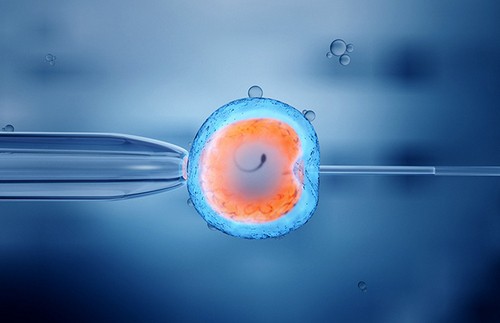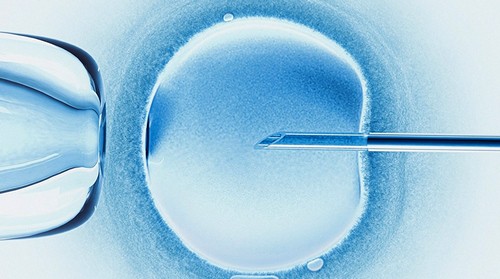Effective methods of assisted reproductive technologies (ART) will be discussed below. Two of the most popular methods of victory over the diagnosis of infertility, IVF and ICSI, are considered today.
A distinctive feature of intracytoplasmic sperm injection from in vitro fertilization in the variability of the fertilization procedure. Both methods include phased preparation that has differences. IVF involves mixing all male reproductive cells obtained with several female eggs.
In contrast to IVF with ICSI, the introduction of the male gamete through all the ovule barriers must be carried out by a specialist artificially in a laboratory.
The procedure requires:
- Special expensive equipment.
- Appropriate reagents.
- The participation of qualified experienced embryologists,
- When using the ICSI technique, expensive reagents and sophisticated equipment are used.
The further technique for replanting and developing embryos is identical for both cases.
According to statistics, almost one in five couples in the world can’t naturally become parents. This is due to several reasons, among which in the first place are health problems or the presence of defects in the reproductive system. Modern medicine can give a real chance to such couples. Spouses can successfully undergo a certain course of treatment, and become happy parents. Unfortunately, not all men and women, due to certain factors causing absolute infertility, can have their own child. Helping such people, modern assistive technologies offer certain procedures that facilitate the onset of pregnancy.
What is IVF in the treatment of infertility
In vitro fertilization (IVF) is the most common modern method of reproductive assistive technology, in which mature oocytes (from female ovaries) and sperm (male germ cells) are extracted from partners. Under specially created laboratory conditions, cells are connected, i.e. artificial insemination occurs.

Difference from natural conception
IVF differs from the traditional conception in that fertilization occurs in the laboratory, where protection against the effects of negative factors that prevented the onset of natural pregnancy is provided. In the traditional version of IVF in the laboratory, after receiving the source material from future parents, all male sperm and several female eggs are mixed. To fertilize the sperm, it is necessary to independently pass through three layers of the oocyte: a radiant crown and 2 membranes (shiny and cellular). The conception process is completed when the sperm penetrates into the egg and it begins to divide.
Then the embryo (the fertilized egg that started the division) is placed in a special cultural medium for several days to go through a certain stage of development, and only then it is transferred to the prepared uterine cavity of the patient. If the procedure is successful, the embryo continues its development in the mother’s body, attaching itself to the endometrial wall. Pregnancy later proceeds without differences from the traditional conception.
But under certain conditions, the traditional help of IVF technology does not give a result – conception does not occur. Today, medicine can offer a number of more effective therapies to defeat infertility, which have gained well-deserved popularity among clients. For example: ICSI – a method that helps increase the effectiveness of IVF.
ICSI technique in the struggle for the onset of pregnancy
ICSI (Intracytoplasmic Sperm Injection) is one of the IVF options that provides in vitro fertilization under the supervision of a specialist with the most benign representative of everything presented by the future father. This technique involves the injection of sperm into the cytoplasm of the oocyte (in contrast to the independent penetration of the male gamete through all the ovum membranes in the IVF method).

The process is led by an embryologist. He selects with the help of special equipment the most active, strong and healthy male representative. The procedure completely prevents the fertilization of the egg with a random sperm. With a microscopic needle, the “chosen one” is inserted directly into the oocyte, which excludes fertilization with a weaker sperm.
After this, the fertilized oocytes are placed in a special environment for further development under the supervision of a specialist. As with IVF, the embryo, which has passed a certain period of development in artificial culture, is planted into the woman, the further development of the embryo occurs in the uterus. Usually, two embryos are planted for the future mother to secure, but other individual options are possible by the decision of the doctor.
Positiveness of ICSI technology
The positive use of ICSI is that:
- The process takes place completely under the supervision of a physician.
- Minimally traumatic.
- It has no negative consequences on the subsequent development of the fetus.
- It is used when the male gamete has low vitality.
When and to whom is shown conception through ICSI
The decision on the need to use ICSI is taken in the following cases:
- In male infertility, when qualitative or quantitative indicators of spermatozoa are impaired, leading to their inability to overcome all egg shells (oligozoospermia, teratozoospermia, azoospermia)
- When women with age, in the diagnosis of thickening of the oocyte membrane, there is an obstacle to the penetration of even normal male genital gametes.
- When determining antisperm antibodies, when the MAP test exceeds 50% (immunological form of infertility).
- With several unsuccessful attempts to conceive in vitro fertilization, even when male gametes and female eggs have normal IVF fertility rates.

Determining the choice of method and technique of exposure
Question delivery: “Which of the IVF or ICSI methods is better and more reliable?” is not correct.
Only one piece of advice applies here: the optimal choice for the doctor is a reproductologist who should be trusted. He will tell in a confidential conversation about the possible techniques of exposure, the consequences and subtleties of the procedure, he will recommend the most effective option. Because all procedures are carried out in laboratory conditions without the direct participation of spouses, the method of extraction and research of germ cells for future parents does not matter. And do not meticulously find out, wondering what the difference between the various technologies of ART.
Summing up, it should be noted once again that trust in a doctor who will do everything possible to achieve a positive result and achieve a desired pregnancy is the path to success.



